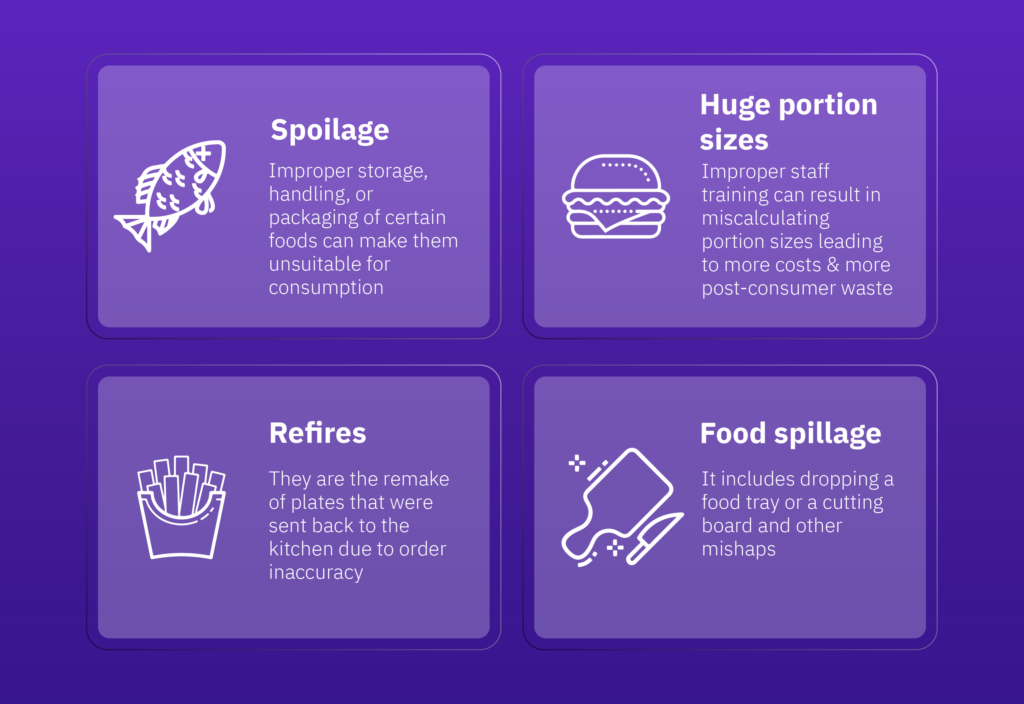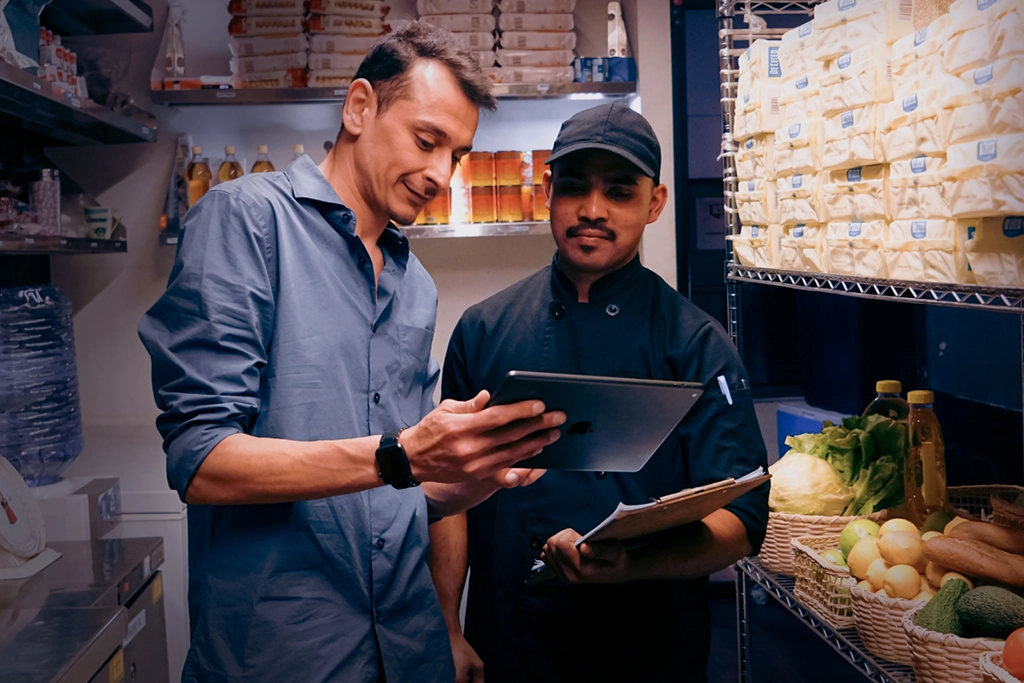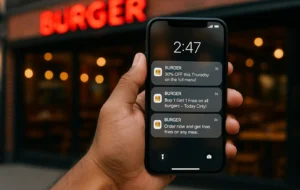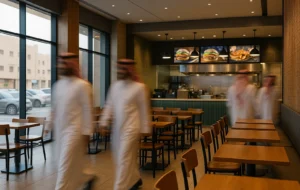Managing a restaurant comes with a heap of challenges as it involves a lot of aspects that can be arduous and overwhelming. One challenge, often overlooked or underrated, is food waste. Despite seeming like a teeny-tiny problem compared to other challenges, food waste can be detrimental to the environment and the restaurant’s finances. According to Food Safety Magazine, implementing strategies to reduce food and water waste can lower operating costs by up to 30%.
Therefore, it is crucial to tackle this problem and implement a food waste management system in your restaurant. If you haven’t done that yet, we’ve got you covered!
In this article, we go through the types of food waste at restaurants and the methods you can adopt today to help you manage your inventory more efficiently, reduce waste, and lower related costs.
What Are The Types Of Food Waste?

A study by the University of Arizona found that food waste in restaurants can reach up to 11.3% of their food supply. This begs the question: where is all that waste coming from? There are two types of food waste in every restaurant: Pre-consumer waste and post-consumer waste, with several factors contributing to them:
Spoilage: improper storage, handling, or packaging of certain foods can make them unsuitable for consumption.
Huge portion sizes: improper staff training can result in miscalculating portion sizes leading to more costs and more post-consumer waste.
Refires: they are the remake of plates that were sent back to the kitchen due to order inaccuracy.
Food spillage: it includes dropping a food tray or a cutting board and other mishaps.
How Can You Reduce Food Waste?

Before implementing measures to reduce food waste, you need to figure out exactly where this waste is coming from. Dedicate one week or two each season to track all your pre-consumer and post-consumer waste. Create a sheet that tracks each item wasted, its weight or amount, how it was wasted, and the time and date. Make sure to mention the name of the person who reported it to avoid listing it more than once. This way, you can estimate your monthly food waste, assess the gravity of the situation and take appropriate actions.
Once you get that out of the way, you can start adopting methods to help you cut waste to the best of your ability. So bring out your notepad, we’ve got the best restaurant food waste solutions for you!
1- Ensure proper food storage
According to WRAP, 21% of restaurant food waste is due to food spoilage. To reduce that percentage, make sure to follow storage temperature guidelines to a tee. Set your refrigerator temperature at 4°c or below and never leave food that requires refrigeration at room temperature for more than two hours. Store frozen food at -18°c.
2- Automate inventory management tasks
Technology is a key player in reducing food waste in restaurants; it generates faster results and more accurate information. Therefore, it is crucial that you automate your inventory management to avoid human errors as much as possible and save time. This is where your investment in a multipurpose POS system comes in handy. Our All-In-One Point of Sale Solution is a cloud-based system equipped with an inventory management module that allows you to track your inventory down to the pickle!
3- Use the FIFO method
Rotate your inventory following the FIFO (First-in, First-out) method. First, label each item with its expiry date and then bring the older items to the front of your storage area to ensure they’re getting used before they spoil.
4- Avoid over-preparing
Preparing food in advance is crucial for restaurant service, there is no way around it. However, it is important to adjust the volume of the prepared food according to the demand at each day of the week and each season of the year. Large-batch cooking means that food may not get used before it goes out of date. Once again, you can refer to your POS reports to figure out your restaurant’s busy and quiet periods and go from there.
5- Reduce portion sizes
A 2012 study by wrap found that over a quarter of people leave food at the end of their meal which contributes the most to post-consumer food waste. Most restaurant portion sizes are bigger than the standard servings recommended by the FDA. Therefore, reducing the volume of your serving will minimize the food waste problem and help reduce costs.
6- Adjust your cart according to past sales data
An advanced POS system can generate reports on the use of each ingredient in each dish sold on a daily, weekly, and monthly basis. Use this data to order ingredients in quantities that correlate to a certain extent with your future needs. This is one way to improve your inventory management and reduce the unneeded quantities of food that end up spoiled in your kitchen.
7- Create weekly specials to use up ingredients
Create specials that feature ingredients that are close to expiring or getting spoiled.
8- Train your staff on how to reduce waste in restaurants
Poor food preparation is the biggest contributing factor to pre-consumer food waste, accounting for 45% of total waste according to WRAP. Therefore, it is worthwhile to train your staff on the correct ways to handle, store and prepare food as well as keep the kitchen clean to avoid cross-contamination.
9- Eliminate unpopular dishes
Our POS system helps you identify unpopular dishes. Consider eliminating these dishes from your menu to reduce pre-consumer food waste and cut costs.
10- Inspect all deliveries
Perform due diligence in inspecting all deliveries arriving to your restaurant. By doing that, you will identify any error in your order and make sure all goods are free from spoilage or damage and that they are being delivered according to the correct storage temperatures
11- Improve order accuracy
Refires constitute a fair percentage of wasted food, hence the importance of improving order accuracy. Investing in a Self-Ordering Kiosk will not only help you solve this problem but also help boost sales and reduce costs among other benefits.
By now, we hope that you gathered some useful tips to include in your notepad. However, even after doing everything in your power to eliminate waste, it will still find a way to sneak in. In that case, what can we do with wasted food? You can donate excess food to a local charity given that it’s still safe for consumption or you can use them to prepare delicious and cost-effective staff meals that consist of leftover ingredients. Our last tip is to offer takeout containers for your customers to avoid throwing food out.
Now more than ever, restaurateurs need to be serious about reducing food waste in restaurants, especially in the MENA region where the percentage of food waste generated by the hospitality sector is skyrocketing. By making serious efforts to solve this problem, you will be doing what’s right for both your business and the environment.



